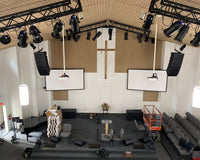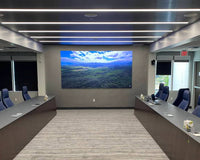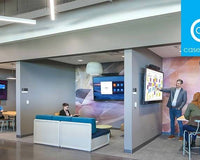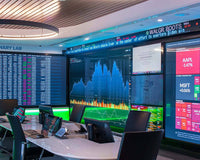A meeting without visuals is still a meeting; a meeting without audio is voided.
IntelliMix DSP polishes the audio to a lustrous sheen whether as software on a room PC, on the P300 hardware, or in the microphone itself.
Microflex networked loudspeakers complete an end-to-end encrypted audio chain with reproduction that bypasses bulky outboard amplifiers.
According to 81% of IT Decision Makers, audio has the biggest impact on virtual meetings. It is easy to overlook good sound, but it is impossible to ignore poor sound. In addition to causing fatigue, it also increases distractions and reduces comprehension.
In recent years, business communication has evolved, resulting in new demands on technology. It has historically been necessary to use a combination of audio components from multiple manufacturers to effectively support a video conference: microphones from Brand A, audio processing hardware from Brand B, amplifiers from Brand C, and loudspeakers from Brand D. Getting these to work well together can be complicated and expensive. Then, when a problem occurs (either during commissioning or later), each supplier claims that the problem must be the fault of someone else. The result is that AV and IT managers are caught in an endless cycle of troubleshooting. In this cycle, they try to figure out where the problem actually lies by obtaining information from each manufacturer.
It would appear that an all-in-one soundbar-style appliance would be an ideal solution. With a microphone, some echo cancellation and noise reduction processing, a loudspeaker, and perhaps even a camera built-in, interoperability is assured. Smaller rooms can benefit from having just one box to monitor and manage. These types of units are easy to install and manage. Nevertheless, applying 'one size fits all' audio components to every meeting room makes them unsuitable for many meeting rooms. Despite these integrated solutions' strengths, users often report significant shortcomings. In fact, 96% of business users say that virtual meetings frustrate them.
A standardized approach is impossible for all but the smallest huddle rooms due to their unique characteristics. The size and shape of tables, room elements like glass walls, ambient noise, and even user preferences can complicate things. In order to deliver high-quality sound from every seat in that room, a unique configuration of microphones, audio processing equipment, and loudspeakers is required. The solution that works in that room is probably not appropriate for a room across the hall.
With Shure audio ecosystems for conferencing, you can configure options that work together in medium-sized rooms, small rooms, rooms with poor acoustics, and rooms with different seating arrangements every day. Since it's all Shure, it's reliable and easy to use, yet it does things a mere appliance cannot.
SUBSCRIBE TO OUR NEWSLETTER
Recieve our latest weekly releases, offers, guides and more.







